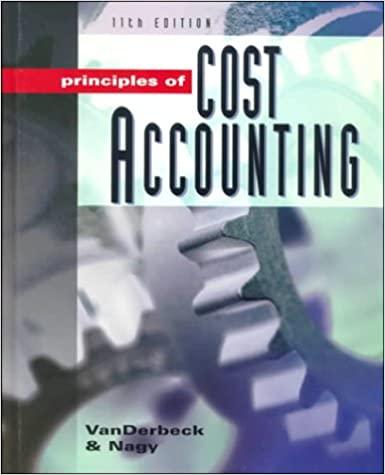all

$. Returning to the original numbers, please take the tax rate to up to 29.4% and down to 26.6% (up by 5% and down by 5%) and record the new net present value numbers. 6. Returning to the original numbers, please take the weighted average cost of capital for this project up to 10.5% and down to 9.5% (up by 5% and down by 5%) and record the new net present value numbers. 2. From the answer to the prior six problems using the resulting range of outcome after making the 5% changes to the variables, which variable has the greatest influence on the net present value of this project? 8. Please go back to the original spreadsheet numbers the original net present value is $72,591. Please run a net present value breakeven using this original data and record the net present value level of sales here Prior to beginning this project, the company can increase the initial outlay by $150,000. This additional upfront acquisition stage cost would lower the variable costs to 30% of sales and increase the disposition value to $550,000. What is the new net present value and the new net present value breakeven level of sales , and would this be a good move for the company? 9. Please go back to the original spreadsheet numbers. As an alternative before beginning this project, the company can reduce the initial outlay by $300,000. This would increase the variable costs to 50% of sales and decrease the disposition value to $400,000. What is the new net present value , and the new net present value breakeven level of sales and would this be a good move for the company? 10. Going back to the prior two problems which of these alternatives is better for the company? The original method, the modification suggested in problem 8, or the modification in problem 9? Why? 11 @ 2 5 G Week 8 Excel Spreadsheet to be used with the Practice Set: Years Acquisition stage cash flow: Initial Outlay (800,000 7 Operating stage cash flow Sales Fond Cost Variable Cost Depreciation expense Taxable income u Tuxe 1 Anar tax income 1. Add back depreciation 3 Operating cash flow 600,000 (220,000) (240.000) 5.000 72.000 100 5140 000 119.840 300.000 600,000 (220.000) (220,000) 240,000) 240,000) 000 0.000 72.000 72,000 201100 20.10 51.140 31,840 50.000 63.000 119.240 119,140 800,000 (220,000) 240.000 160.000 72,000 (20.100 81,840 68,000 119,040 100,000 600,000 (220,000) 220,000) (240,000) 240,000) 63.000 168,000 72,000 72,000 2012 2010 51,040 51,340 08.000 60,000 119.140 119.040 600,000 600.000 (320,000) (2000) 1240.000) 240.000) (10,000) 0.000 72.000 72.000 (2010) 12010) 51,840 51.840 11,000 68,000 110,840 119,640 Disposition stage cash flow. 500.000 119.340 119.340 119,140 110.840 110.540 119.040 110,840 613,640 Totalcash flow 10 Present Value 3. Nel Present Value (800.000) 072,501 72.591









